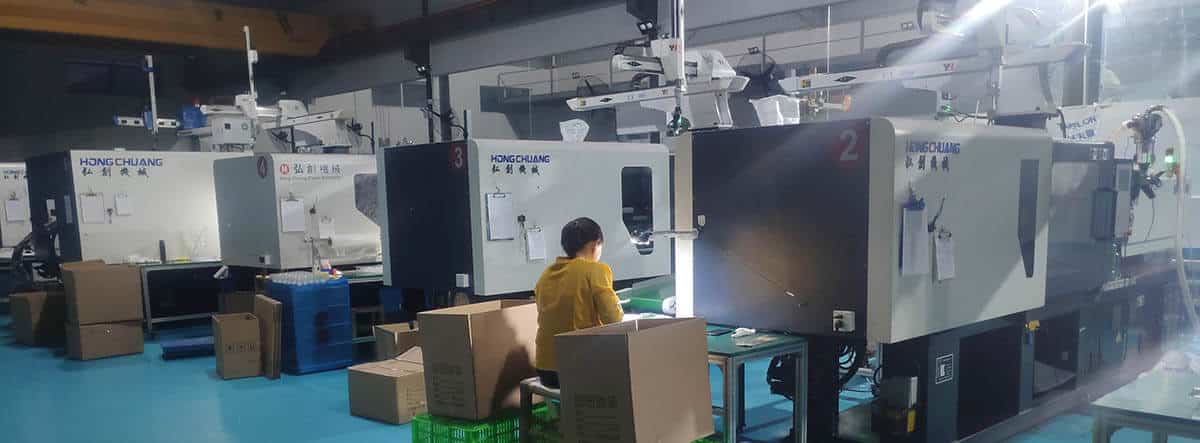injection molded lenses,injection molding optics supplier
Injection molded lenses are an important part of many optical applications. At Topworks plastics, we offer a one-stop service for the design, tooling and injection molding of these lenses from China.
We have years of experience in this field, and our team of experts can deliver high quality results quickly and efficiently.

We offer a variety of different lens designs to suit your specific needs, and our flexible manufacturing process means that we can produce custom parts quickly and easily.
Topworks plastics have extensive experience with this process and know how to get the best results from it. we can use their expertise to create custom pieces that fit your specifications perfectly.
We offer fast turnaround times so that you can get what you need when you need it without having to wait around for weeks or months on end for your product to be completed.






Topworks plastics also keep costs down by using materials such as glass or acrylic instead of more expensive plastics such as polycarbonate .
So if you’re looking for a partner from China who can provide high quality injection molded lenses, look no further than Topworks!
“I’m glad to inform you that all plastic parts are perfect!!! We are delighted, and therefore there are good chances to continue our relationship for any coming new project.”

CRISTIANO
ITALY
“Steven is a very detail-oriented project manager and engineer who can solve problems creatively and also provides excellent service. It was a pleasure working with him.”

DAVID
USA
what is injection molding optics
Optical injection molding (OIM) is a specific type of injection molding applied for optical lenses, prisms, and other optical components. OIM is used for applications such as car headlights and taillights, eyeglasses, camera lens covers and other applications where high-quality optical components are required.
The process involves the injection of molten material into a mold that has been preheated to a temperature above the glass transition temperature (Tg). This creates an object with a solid core surrounded by glassy beads of glass.
material for injection molding optics
The most common materials used in OIM are PMMA (polymethyl methacrylate), polycarbonate and PTFE (polytetrafluoroethylene).
PMMA is commonly found in CDs, DVDs and many other consumer products. It has excellent clarity and durability, but can warp when it comes into contact with heat or pressure.
Polycarbonate is similar to PMMA but harder and more scratch resistant than PMMA. It can be used in outdoor applications such as car headlights because it can withstand high temperatures without breaking down or warping.
PTFE is a very strong material that has good chemical resistance and excellent electrical insulation properties. It is commonly used in medical devices like catheters and IV needles, as well as in cookware and food packaging.

design for injection molding optics
It is necessary to follow a set of guidelines when designing plastic optics in order to minimize the possibility of unpredictability in quality issues. All of the following descriptions of design guidelines apply to plastic optical parts, but also to injection-molded optical lenses.
To begin with, the rule of thumb for designing optical lenses is to know how light passes through them. Based on the given refractive index of the material, a lens will bend light rays if it has specific surface curvatures on both sides. Thus, it is important to discuss some important aspects of plastic lens design.
- basics: It is assumed that light can be represented by rays, and that these rays travel in a straight line through plastic materials. The angle of refraction is determined by Snell’s law when light enters a plastic material. In plastic lenses, the light rays are bent into two spherical surfaces so that the image is formed at the focal point on the opposite or same side as the object. In this way, a single lens achieves the desired optical performance by generating the geometric dimensions and thickness of its two surfaces.
- Tolerances: Design engineers follow these tolerances when manufacturing molds for optical lenses. So the relevant process conditions can be determined in order to determine the allowable variations in geometric dimensions of an individual lens and the corresponding optical performance.
- Shape and thickness: Since most plastic lenses are designed with axis-symmet-ric surfaces, the optical surfaces of the lenses are made as inserts and machined by a single-point diamond turning (SPDT) process. Hence, the lens shape is de-signed with flanging for mounting mechanisms and associated gate designs. The shape and thickness of plastic lenses are much different than glass lenses when injection molding is considered.
- Aspheric surfaces:Light rays that pass far from the center of the lens cause primary aberrations in geometric optics. A lens system’s aspheric surface compensates for primary aberrations. By using the SPDT process, an aspheric surface can be machined quite easily since an insert is used to create the mold surface. Currently, aspheric lenses are largely used in cellphone cameras to reduce their lens count.
- Athermalization and coatings: Because plastics have a larger coefficient of thermal expansion (CTE) and a change of refractive index with temperature than glass, choosing proper plastic materials is necessary to compensate for the effects of ambient temperature variations. Plastic lenses also require coatings since gradual changes of the refractive index on the lens surface maximizes transmission of light rays. The final dimensions and coatings of a lens must be considered when designing the lens.
- Aside from the above suggestions, lens designers should also keep an eye on a few empirical issues. Any form of undercut in a lens geometry should be avoided as this may cause difficult demolding issues. It is therefore recommended that a draft angle of 1 to 2 degrees be used in order to facilitate demolding. A uniform thickness of the lens should be achieved during the filling stage to avoid air entrapment during molding. A lens design that allows smooth transitions between various thicknesses will provide a more desirable filling pattern, even though lens function may require a mounting flange or edge. Last but not least, the gate should always be positioned in a visible area of the lens cavity as an index for mounting.
Cooling of injection molding of optical parts
Cooling of injection molding of optical parts is an important process in the production of optical components. The cooling process is necessary to ensure that the optical components are properly formed and that they meet the desired specifications.
1. High melt temperatures caused a significant reduction in the profile accuracy of molds, but only when cooling channels were arranged longitudinally.
2. It is difficult to achieve a consistent lens profile when machining multi-cavity molds with an inappropriate cooling channel layout,because the temperature distribution of the mold cavity is not uniform and can affect overall part accuracy.
3. Molded lenses, because of their residual stresses, have significant optical distortions. When these are converted to wavefront aberrations for evaluation purposes, the conversion must take into account how the stresses affect the lens performance.
4. By optimizing the process parameters according to the relevant properties of optical-grade polymers, injection molded lenses can achieve optimal optical performance. A contour pattern map might not agree with the wavefront aberration of the molded lenses based on the experimental results, but the P-V and RMS values of the aberrations of the molded lenses are quite similar to what was predicted by an optics simulation based on CAE mold flow simulation results. Mold flow simulation analyses can, therefore, accurately predict residual stresses and profile deviations of molded lenses using mold flow simulation analyses. Mold flow simulations have not yet taken into account the density variation of molded lenses due to the lack of modeling of solid polymer density relaxation.
